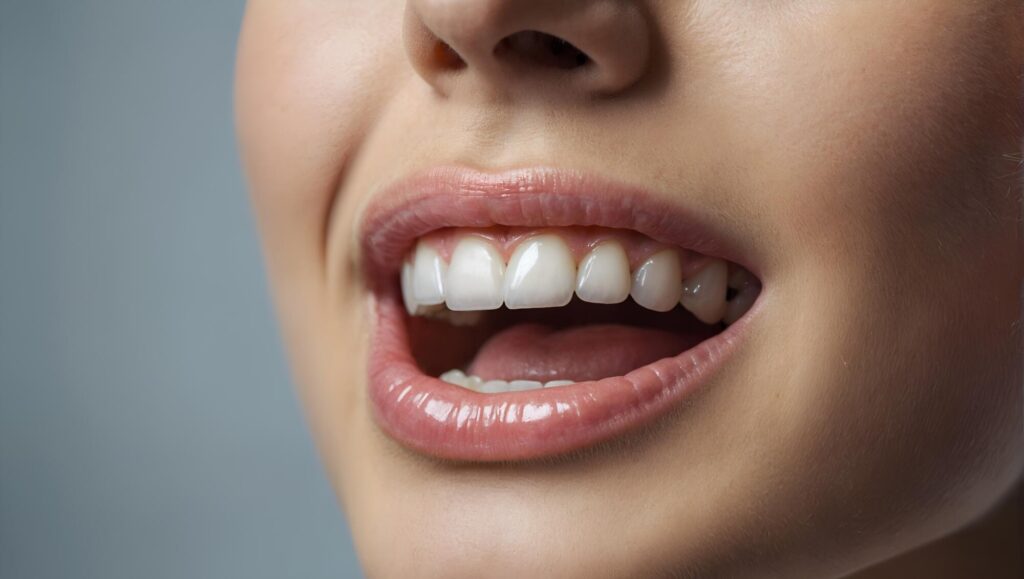Have you ever wondered what to do if you chip a tooth and are in pain or stress? A chipped tooth dental emergency can feel scary and confusing. It might happen when you bite down on something hard or get hit in the face.
You may feel sharp pain or notice a piece of tooth missing. You may not know how to act fast or what options are available. In this blog post, we explain treatment options step by step.
By reading this post, you will feel more calm and ready to handle a chipped tooth dental emergency with the right steps and care promise.
What Happens When a Tooth Chips
When part of your tooth breaks, it can leave a sharp edge. This can hurt your tongue or cheek if left alone. A small chip might not cause much pain.
But a larger chip can expose the inner layers of the tooth. Nerves inside the tooth may then feel temperature changes or pressure. A big break can let bacteria reach deep inside. This might cause an infection if not treated.
Minor chips may just look ugly, but others may worsen over time. A fast step by step response helps reduce risk and maintain healthy teeth.
When You Know It Is an Emergency
You should treat a chip as an emergency if you feel pain deep inside the tooth. Pain that keeps you from eating or sleeping is a clear sign. If you see swelling around the tooth or the gum is red and sore, act at once.
If a large piece of tooth falls out, you might be at risk of nerve damage or infection. Difficulty speaking or chewing could mean serious damage. You may also feel pain when breathing in cold air or eating hot or cold foods.
That means the tooth interior may be exposed. In these cases, you should drop other tasks to find emergency dental care in your area.
How To Act Right Away
When you chip a tooth keep calm and try not to panic. Rinse your mouth gently with warm water to clean the area. If there is bleeding use a clean cloth or gauze to press gently on the spot until it stops.
If there is swelling, place a cold compress on your cheek outside the mouth for several minutes to ease it. Avoid touching the chipped part with your tongue or finger. Do not try to smooth or clip the broken edge yourself.
That can make things worse. Take over the counter pain relief if needed and safe for you. All these simple steps help reduce pain and risk until you can see a dentist.
Initial Assessment by the Dentist
Once you are at the dental office, the dentist will examine the tooth closely. They may use X rays to see any damage under the surface. The dentist will ask you to describe how the injury happened. They inspect the gum and check for signs of infection.
The dentist will also tap lightly on the tooth to test if it is alive inside. They will check if any nerves or tissues under the tooth are damaged.
This initial check helps the dentist plan what treatment to offer. It sets the stage for a quick safe fix to protect the tooth and relieve your pain.
Treatment Option One Repair With Bonding
One common option is to fix the chip using dental bonding. Bonding uses a tooth colored resin applied to cover the chip. The dentist shapes and polishes the resin so it looks like the rest of the tooth.
This method is fast, and can often be done in one visit. Bonding works best when the chip is small or only affects the enamel. It restores your tooth’s look and prevents further damage.
The bond sticks well but may chip again if you bite hard foods or use your teeth as tools. With proper care bonding can last several years but may need repair later.
Treatment Option Two Use a Dental Veneer
For larger chips or if the front tooth is damaged, a veneer may be best. A veneer is a thin shell made in a lab that covers the front of the tooth. The dentist takes an impression and sends it to a dental lab.
When the custom veneer is ready, the dentist bonds it to the tooth. This method protects the remaining tooth and gives a natural look. Veneers are strong and resist stains better than resin bonding.
They cost more and need at least two visits to complete. The result is long lasting and can help with shape, color, and strength all at once.
Treatment Option Three Place a Dental Crown
In cases where a chip is large and tooth structure is weakened a crown may be needed. A crown covers the entire visible part of the tooth. The dentist removes any weak tooth material and shapes the tooth underneath. They then take an impression for a lab to make a custom crown.
At your next visit the dentist fits the crown over the prepared tooth and bonds it in place. Crowns are made of metal, ceramic or porcelain fused to metal.
They restore full function and protect the tooth from further break or decay. Crowns are durable and can last many years with good care.
Treatment Option Four Root Canal for Deep Damage
If the chip exposes the inner nerve or pulp of the tooth you may need a root canal. This happens when pain is severe or if tests show nerve damage. The dentist removes the infected or damaged pulp inside the tooth.
Then they clean and seal the inside with a filling material. After that procedure they place a crown to protect the tooth.
While a root canal may sound scary the process can relieve pain and save the tooth. Recovery is usually quick and you can eat normally again after a short healing time.
When Extraction Becomes Necessary
If the tooth is too damaged or decayed it might not be possible to save it. In that case the dentist may advise removing it. Extracting a tooth ends pain from a broken and infected structure.
After removal you can replace the missing tooth with options like a bridge, implant or partial denture. Discuss these replacement choices with your dentist. Each replacement has its own recovery steps and cost.
Losing a tooth should be a last resort. Dentists aim to treat and restore whenever possible. But if the damage is beyond repair extraction may be safest.
How To Prevent Long-Term Problems
After any treatment you must follow care steps to strengthen the tooth. Avoid biting hard objects like ice or pens. Brush twice a day with soft bristle brush and use fluoride toothpaste.
Floss daily to clean between teeth. See your dentist for regular check ups every six months or as advised. If you had bonding or a crown you may need to avoid certain foods for a time.
Use a mouth guard if you play sports or grind your teeth at night. These steps protect your repaired tooth and keep other teeth safe too.
When To Use Temporary Measures at Home
There may be a delay before your dental appointment is available. In those hours you can take certain temporary measures. You can cover the sharp edge of the chip with a piece of sugar free gum or a small piece of soft paraffin wax.
This prevents cutting your tongue or cheek. Use over the counter pain relief like ibuprofen if you feel pain and you can use it safely. Avoid asphalt or sticky foods that may catch on the chipped tooth.
These measures are not long-term solutions. They simply protect you until you can see a dentist.
How To Choose the Right Treatment Option for You
Your best choice depends on the size of the chip and how much it affects your tooth. Dentists consider cost, how long you want it to last, and how the tooth looks. Small chips often work well with bonding.
Bigger chips on front teeth may suit a veneer. Chips that weaken the tooth may need a crown. If the nerve is affected then a root canal becomes necessary.
The dentist will explain each option and answer your questions. You should ask about how many visits each treatment needs and the cost. This helps you decide what fits your needs best.
Caring for Your Tooth After Treatment
Once your treatment is complete you must care for your tooth. Wait until any numbness wears off before eating. Choose soft foods at first and chew on the opposite side.
Maintain good daily brushing and flossing habits. Visit your dentist as recommended for follow up checks. After bonding you may need polishing or repairs over time.
If you have a crown or veneer don’t bite hard seeds or open packaging using your teeth. Report any pain, sensitivity or damage to your dentist right away. Taking these steps keeps your tooth healthy and lasting longer.
Why Prompt Treatment Matters
Quick treatment helps avoid pain that can get worse. Prompt care prevents infection from spreading inside the tooth. The longer you wait the higher the chance of needing a root canal or extraction.
Acting fast helps preserve the tooth structure. It also protects the soft tissues like gum and nerve beneath the tooth. Early care means cheaper, less invasive treatment most of the time.
You avoid complex repairs that take more time. That means less disruption in your life and better tooth health later on.
Long-Term Tooth Health With Treatment
Choosing the right treatment leads to long-term health for your tooth. A restored tooth can look natural and match other teeth in size and color. Crowns or veneers can protect the tooth from breakage and decay.
Bonding may need refresh work after a few years. Regular dental visits help spot issues early before they become serious. If you had a root canal you can keep that tooth for many years if cared for well.
Prevention steps like mouth guards and good habits reduce risk of new chips. With good choices and care your teeth can serve you for life.
How To Feel Confident After a Chip
After treatment many people worry about biting, eating or smiling again. Follow the dentist’s advice about eating until the repair sets. Brush gently around the treated area until healing finishes.
If you had a night guard made, use it to prevent grinding at night. Try not to use the repaired tooth for hard crunching tasks. Stay aware of any pain or change in the treated tooth.
Contact your dentist if you feel discomfort or if something feels off. With time you will regain full confidence in how your tooth works and feels.
Accessing Professional Help When You Need It
If you experience intense pain, swelling, or signs of infection after your chip you must act quickly. Call your dental office and explain that lighting pain or swelling has worsened. That will help you find emergency dental care with speed.
Many dental offices reserve time each day for urgent dental needs. In an emergency clinic, they can provide immediate care to ease your pain.
Getting prompt help ensures the problem does not worsen. You can avoid long-term damage or more invasive treatment needs.
Final Care Tips
Once healing is underway, stay gentle in what you eat and how you use your teeth. Avoid chewing on hard candies, ice, or popcorn kernels. Keep good oral hygiene daily and see your dentist for cleanings.
Stay hydrated and limit sugary drinks to protect enamel. If you clench or grind at night ask about a protective night guard.
Share any small concerns with your dentist early so problems stay minor. These final care steps support the longevity of your dental repair and protect your overall smile for years ahead.
Dental Emergency: Strong Conclusion That Leaves You Empowered
You now understand how to face a chipped tooth dental emergency and feel ready to act. You learned how to act fast, what immediate steps to take, and how dentists assess the damage. You know the different treatment options and why they matter for long-term tooth health.
You also know how to choose the right option and how to care for your tooth after treatment. By following these steps, you can ease pain and prevent more serious problems. You can be confident in restoring your tooth and protecting your smile for years.
Did this guide help you? Browse the rest of this section for more advice on a variety of topics.





